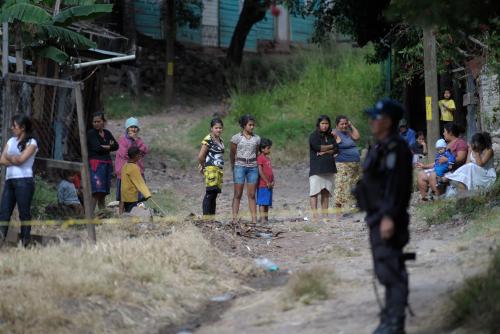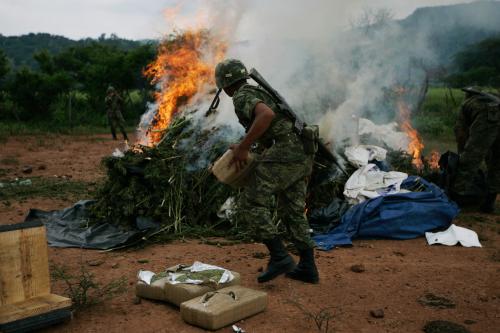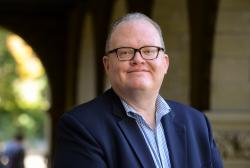

12:00 pm EST - 1:30 pm EST
Past Event
12:00 pm - 1:30 pm EST
1775 Massachusetts Avenue NW
Washington, DC
20036
The Northern Triangle, which includes Honduras, Guatemala and El Salvador, is the region with the highest homicide rate per capita in the world, much of it resulting from gang violence (maras, pandillas, narcotraficantes). Gang members outnumber security forces personnel, and governments have been unable to control rising levels of violence. Most of those displaced remain within the borders of their states and yet there are increasing numbers of people crossing state boundaries in search of safety. But the transnational reach of criminal gangs means that even those seeking protection in another country may not be safe.
Central America has a long history of displacement – both refugees and internally displaced persons – dating back to the civil wars of the 1980s and 1990s. Yet, there has been surprisingly little research or policy work over the past decade on criminal violence-induced displacement. The objective of this meeting was to identify the scope of the problem and establish a research agenda that contributes to improved policy responses.
This roundtable convened approximately 25 representatives from the U.S. government, United Nations and other intergovernmental organizations, non-governmental organizations and academic experts to discuss Central American displacement induced by criminal violence. Held under the Chatham House rule, the event report highlights the key themes discussed and suggests possible paths for follow-up.
While expressing appreciation for this seminar, participants noted that more work is needed across the following issues:
1. Comprehensive data collection: More data is needed to understand all stages of the issue ranging from initial displacement within countries to better information on those in transit, and developing a more nuanced understanding of motivations for flight. Improved data would support all other objectives identified by seminar participants.
2. Nuanced typologies of the actors involved: This would allow for an improved understanding of the factors motivating both violent armed actors and displaced Central Americans.
3. Effective state interventions: Additional information is needed on what programs have actually improved governance and reduced displacement. There is a sense that while many different policies have been tried by states and by their international partners, ranging from addressing root causes to ‘mano dura’ policies, our understanding of what does and does not work is still inadequate. This is also true in the areas of juvenile justice reform and programs for at-risk youth where further work is needed to assess their impact on the protection of populations to minimize need for displacement, provide security for those in transit and rehabilitate armed actors so as to reduce the violence.
4. Long-range outcomes of rehabilitation and assistance programs: Participants noted that little research has been done on what happens in the long-term following state interventions to ameliorate the violence and displacement.
Several participants indicated that there may be opportunities to further discuss and improve awareness of this issue. In particular, there will be regional consultations leading up to the commemoration of the 30th anniversary of the Cartagena Declaration at the end of 2014, which may be an appropriate moment to draw additional attention to the issue.
Related Content

Elizabeth Ferris
November 8, 2013

Vanda Felbab-Brown
February 28, 2013
12:00 pm - 1:30 pm
On February 11, the Project on Internal Displacement and the Latin American Initiative held a discussion on policy responses to Central American displacement induced by criminal violence.


2024
The Brookings Institution, Washington DC
10:00 am - 11:15 am EDT

Constanze Stelzenmüller
April 22, 2024

Andrew Yeo
April 17, 2024